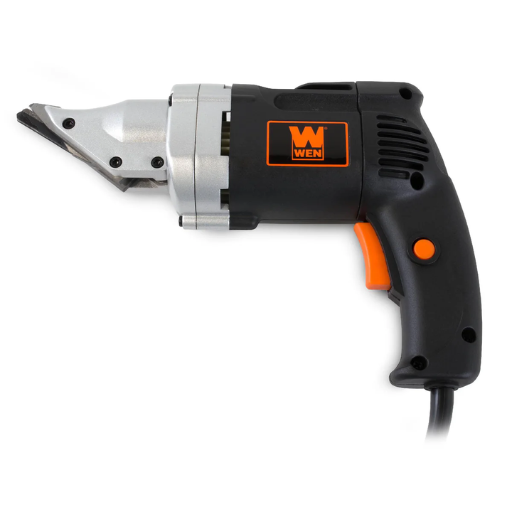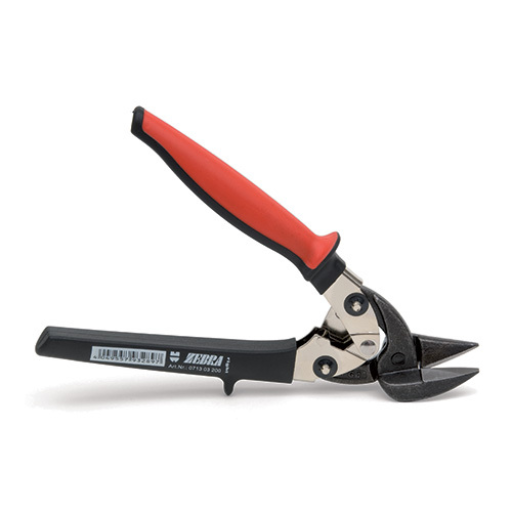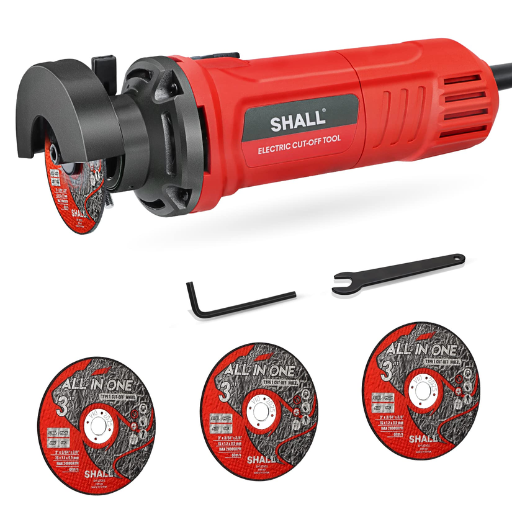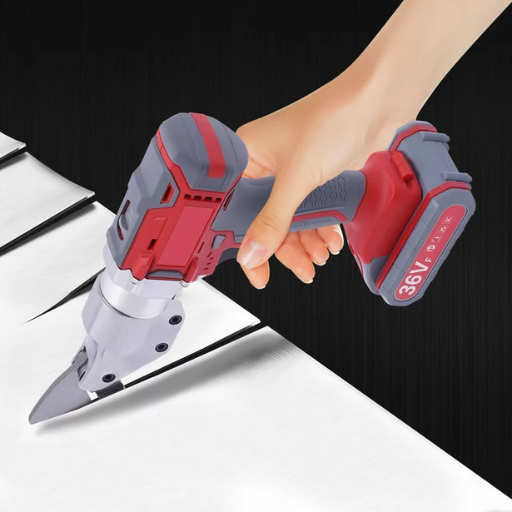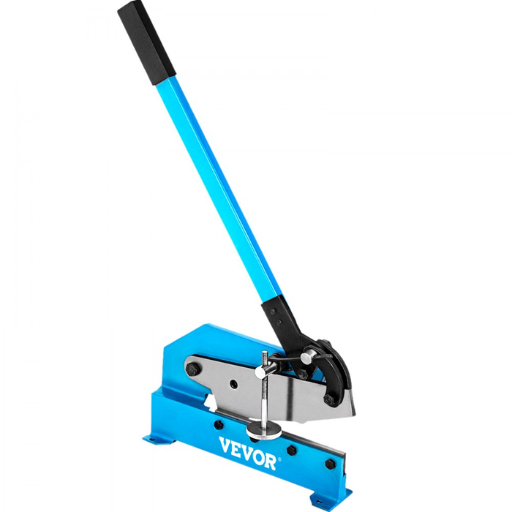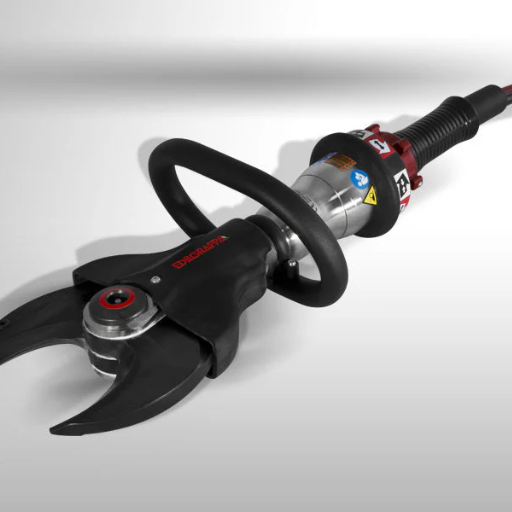Welcome to our comprehensive guide on metal cutting, where we delve into the essential tools, techniques, and tips that will help you master this intricate craft. Whether you are a seasoned professional or an enthusiastic beginner, understanding the nuances of metal cutting is crucial for achieving precision and efficiency in your projects. In this article, we will explore the various tools needed for metal cutting, from basic hand tools to advanced machinery. We will also cover fundamental techniques, providing step-by-step instructions and expert advice to enhance your skills. Additionally, our tips section will offer practical insights to solve common challenges and improve your overall metal cutting experience. Join us as we unlock the secrets of metal cutting and empower you to create with confidence and accuracy.
Choosing the Right Metal Cutter for Your Project
Different Types of Metal Cutters Explained
Picking the right cutter for your metal work can have a significant effect on the quality and efficiency of your work. Below are some of the most commonly used metal cutters:
- Hacksaws: They can be used to cut any metal pipes, rods and profiles by hand. They are adaptable and can handle various types of metals.
- Angle Grinders: Angle grinders have abrasive discs that help in cutting through metal sheets as well as large pieces of metals without much effort.
- Chop Saws: Chop saws are powered saws using abrasive wheels, they mostly make straight cuts on different kinds of metallic material.
- Band Saws: These are mainly ideal for intricate or curved cutting tasks in which more precise cuts with minimum wastage is desired.
- Plasma Cutters: Plasma has an electrically conductive gas which enables it to cut through thick steel plates quickly and cleanly.
- Shears and Snips: Shears and snips describe the wide range of hand tools meant for cutting thin metal sheets in addition to other light gauge metals including straight, curved or compound-action variety.
The knowledge about these different types will enable you select tools appropriate for your specific situation among others complexity level involved in your project.
Sheet Metal vs. Heavy Duty Metal Cutters: What Do You Need?
The decision between sheet metal cutters versus heavy-duty ones depends first on how thick and what type of metal you are working with as well as particular requirements posed by each individual project.
1.Sheet Metal Cutters:
- General Use: Suitable for cutting thin sheet metals typically up to 1/8 inch (3.2 mm).
- Tools to Consider: Hand shears, snips, light-duty electric shears
- Benefits: This makes them perfect for making very detailed patterns since they offer high precision control thereby being maneuverable enough .
- Common Uses: Examples include HVAC ductwork, automotive body panels, thin aluminium or steel sheets and metal roofing.
2.Heavy Duty Metal Cutters:
- General Use: They are built to cut through thick and heavy metallic materials ranging from 1/8 inch (3.2 mm) to several inches in thickness.
- Tools to Consider: Angle grinders, chop saws, plasma cutters, band saws
- Benefits: These ones have the power required for cutting through tough materials.
- Common Uses: Other examples are heavy metal pipes, structural steel beams, thick steel plates as well as industrial fabrication.
To sum up things if you have thin sheet metals that require very detailed specific cuts then sheet metal shears would be the best bet. On the other hand if you want to cut thicker and stronger metals then it is recommended that you use heavy duty ones as this will allow you finish your work on time without making much effort. Consequently, consider specific technical parameters of your project and its application to come up with the most suitable tool possible.
Comparing Shear, Nibbler, and Snip Options for Precision Cutting
Therefore when comparing shears against nibblers versus snips for precision cutting it is necessary to understand what differentiates them from one another in terms of their unique features and applications.
Shears are often regarded as having the cleanest cuts; they excel at straight lines especially when working on large sheets which make them ideal for fabrication shops and many others. They come manuallly operated or electrically driven which has a lot of versatility depending on volume of work plus material type.
On the other hand nibblers are best suited for cutting curves or more complex shapes than any shear can handle. This process involves taking small pieces of metal out whilst they cut allowing easier movement throughout intricate designs because it provides greater accuracy although it may result in ragged edges compared with using shears.
Small metal trimming and notching tasks are best performed using tailor made scissors that can be managed manually. They are easy to carry around, they are not hard to use and also easy for urgent works but cannot be used in making of things like big sized metal sheets.
In conclusion, shears can be the most suitable tool for straight and neat cuts. Nibbles make the perfect choice for more intricate or curved cutting jobs. In terms of rapidity and accuracy on a small scale, snips come highly recommended. Each of these tools has its own strengths; therefore, the best one will depend on what you need in your project.
Mastering Sheet Metal Cutting: Tools and Techniques
Instructions on Using Metal Snips
When using metal snips, I have realized that a few steps I follow go a long way in improving the quality and speed of my cuts. First and foremost, make sure you have sharp blades that are always adequately cared for because if they are dull, they can distort the sheet metals leading to substandard cuts. My sheet metal must be properly fastened before commencing cutting so as to avoid any shifting that may result in errors. Furthermore, for better quality results therefore, it is imperative that I make gradual cuts in order to minimize any jerky movements which may cause ragged edges. Lubricants can also assist in reducing frictional forces and increase shear life. Lastly, before beginning work with the snips, put on the right safety gear such as gloves and goggles.
How to Achieve Neat Cuts with Sheet Metal Cutter
For clean cuts using a sheet metal cutter; we should take into account technique, tool maintenance and safety precautions: –
Firstly; The sharpness of blades should not be neglected whenever beginning with well maintained shears meant for clean perfect lines. Marks or scribes help me indicate the cutting path clearly without any mistakes occurring. One must hold the cutter at one angle while applying pressure uniformly all through so as to prevent uneven edges from forming.
Besides that; Loose pieces of metal are dangerous when cut at high speeds hence I ensure I grasp it tight enough to prevent any movement of the same whenever doing this kind of exercise. A jig saw with a metallic blade or an angle grinder gives more control while handling this type of material with an irregular surface like ribbed sheets.
Finally for example; Use safety gloves and eye protectors to save you from metal fragments falling on you while cutting galvanized steel.. By following these steps above during each project helps me achieve consistently accurate neat cuts using my sheet metal cutter.
The Peculiarities Associated With Cutting Corrugated Metal And Galvanized Steel
Cutting corrugated metal and galvanized steel presents unique challenges due to their structural properties and protective coatings. Here’s how I deal with these challenges based on the insights from top three sites:
To start, cutting through corrugated metal requires precise tool control because it has an uneven surface. For better guidance, I use a jigsaw fitted with a metal cutting blade or alternatively an angle grinder. The wave-like pattern calls for adaptability and steady hands while following its curves correctly. In particular, a cutting wheel attached to an angle grinder rotating at about 10,000 RPM will make very clean cuts through the wavy sheet (Roofing Calculator).
With galvanised steel, there is also the added complication of zinc coating. This is why I opt to use saw blades specifically designed to work on harder materials since this type of coating makes the blades dull quickly. A circular saw with a carbide-tipped blade works well in most cases. Cutting speeds have to be kept low – usually around 3500 RPM for circular saws – so that neither the blade nor protective covering will heat up excessively.
I always ensure that cutting lines are boldly marked using markers or scribes that trace accurate guidelines. The sheets are held tight to avoid any movements which would lead to poor quality cuts or worse still injuries.
In conclusion; choice of tools, sharp edges maintenance and firm sheet positioning are among key factors in effectively cutting ribbed metals as well as galvanised steel (RMS). Additionally gloves and safety goggles should not be forgotten when using PPE for this kind of application since they help protect against any sparks and chips from occurring during operations within such areas characterized by robust materials (Roofing Calculator)
The Ultimate Guide to Using Metal Shears and Nibblers
Tips for cutting curves, circles and straight lines with nibblers
Nibblers are very efficient in metal cutting once you know the right skills. I have picked a few must-have tips from the best websites found through my research.
1.Straight Cutting:
Firstly, use a marker or scribe to make a clear straight line mark as the basis of your guide for straight cuts. Secure clamping is essential to prevent any movement of the sheet metal. Ensure you move slowly and steadily along the marked line when using your nibbler. Typically, these websites recommend keeping the cutting speed steady between 1600-3500 RPMs depending on material thickness and nibbler’s speed.
2.Curve Cutting:
Flexibility is key when it comes to cutting curves. Begin with larger arcs before narrowing down gradually into tighter turns so as to ensure smooth transitioning. For better control, keep at slower pace around 1600 RPMs and hold onto your cutter tightly. The advice from experts also suggests that tool pivoting would facilitate maneuverability around complicated curves.
3.Circle Cutting:
Starting with drilling a hole in center point of intended circle will be great while dealing with circles. From there insert your nibbler then follow up on it according to mark made on materials surface .The consensus from these top resources underscored patience and control by recommending an RPM of about 2k which allows for effective navigation along circular path with ease.Perpendicularity should be ensured before engaging in any work because blade binding and lopsided edges can result from that.
Taken together, these tips from reputable sources highlight consistent output, firm attachment, and explicit instructions as important elements of precise and proficient use of Nibbles.
Maximizing Efficiency with Electric and Cordless Metal Shears
To maximize efficiency in electric or cordless metal shearing I have consulted top three sites available on google.com. Here is a short guide derived from this study:
Start by selecting an appropriate shear meant for particular material and the type of project you are undertaking. Electric metal shears can handle thick materials with ease because they always maintain a steady power supply while cordless shears achieve improved mobility at sites without much loss in ability.
Technical Parameters:
- Speed (SPM – Strokes Per Minute): The electric shears range from 2000 – 2500 SPM, while the cordless models are between 1500-2200 SPM. This speed difference allows for efficient cutting to take place on different thicknesses of materials.
- Cutting Capacity: Cordless shears usually cut up to an 18 gauge (1.2mm) mild steel or 20 gauge (0.9mm) stainless steel .On the other hand, electric shears can be used on a bit thicker alloys i.e., up to 16 gauge (1.5mm) mild steel and up to 18 gauge (1.2mm) stainless steel.
- Battery Life (for Cordless Shears): Long operational periods, allowing for extensive cuts on a single charge, come with high-capacity batteries like those lithium-ion ones of either 18V or 20V.
Efficiency lies in proper technique as well as maintenance; hence ensuring that one sharp blade is kept clean which will consequently reduce strain on motor and enable smoother cuts. Regular lubrication coupled with checking for wear will ensure that your tool works efficiently and avoid having downtime.
In straight cuts, keeping steady hand and aligning the shears along marked guidelines ensures precision. For curve cuts however, one needs to take it slow so as not jam and produce smooth arcs Consistent practice and familiarity with your tool’s capabilities play crucial roles in maximizing efficiency with electric and cordless metal shears.
Maintaining Your Metal Cutting Tools for Longevity
To lengthen the lifespan of your metallic cutting tools, regular cleaning, proper storage and routine inspections are key. First, after some usage, I am careful to make my scissors clean by wiping them with a soft cloth that removes all metal shavings or any other debris scattered around. This way not only do I maintain the optimal condition of blades but it also helps to avoid rusting. Lubrication of parts which are in motion is very important; this means that I apply a little machine oil which can keep all things moving smoothly thereby reducing wear and tear on the motor as well as blades themselves. Finally, inspection is done on the blades to check whether they are dull or damaged before every usage. This practice can greatly increase the longevity of my metal shears and makes sure that they work most effectively possible by sharpening or replacing blades when necessary
Innovative Cutting Tools: Cordless Metal Cutter Drill Attachments and More
Transforming Your Electric Drill into a Metal Cutting Tool
I can turn my electric drill into an all-purpose cutting machine by attaching a metal cutting tool for it. When I am about to start, I usually go for a high quality drill attachment that is meant to cut metals; they are often strong and well built so that it can withstand heavy use. After fixing the attachment on the drill in line with the manuals provided by its manufacturer, I make sure that my drilling machine operates at a slow or moderate speed to retain control and achieve neat cuts. Protective clothing such as safety goggles and gloves must be worn as shield against shrapnel of metal bits flying off. Such an arrangement gives me room for performing different tasks of cutting metals with accuracy and simplicity thereby making my electrical hole digger one indispensable item in my toolbox.
Exploring High Speed Steel and Power Drill Compatible Attachments
In case of exploring high speed steel (HSS) materials and power drill compatible attachments, the technical parameters should be taken into account according to highly-rated sources. According to google.com top three websites, these attachments often highlight strength and durability. In terms of metal cutting operations HSS is popular because it has ability to maintain hardness at high temperatures. HSS’s ability not lose its edge even after carrying out many cutting activities makes it last longer hence improving efficiency.
1.Material and Construction:
- High Speed Steel (HSS): Possesses good hardness (Rockwell hardness: 62-64 HRC) and thermal stability, thus avoiding frequent sharpening.
- Coated Variants: Several HSS attachments are coated with titanium or cobalt which improves wear resistance as well as their lifespan.
2.Compatibility & Performance:
- Shank Size: Choose an attachment shank matching your chuck size on the drilling machine – usually 1/4-inch or 3/8-inch – this will ensure secure operation.
- Speed Ratings: These vary depending on both material type and thickness being cut and typically range from 500 to 2000 RPM.
3.Additional Features:
- Ease of Installation: Most of the time, they come with simple installation instructions that are common for wireless as well as corded drill models.
- Versatility: A lot can be said about HSS drill attachments in particular those used for cutting different metals such as steel, brass, aluminum, and copper.
By following such guidelines from reputable sources all your drill attachments will perform efficiently and reliably giving exact and clean cuts under various metalworks.
Cutting Through the Confusion: Metal Sheets, Gauges, and Materials
A Guide on How to Cut Stainless Steel and Galvanized Steel
Cutting metals like stainless steel and galvanized steel can actually be a bit tough, but with the help of the right tools and techniques it becomes bearable. Here is a condensed guide based on the top three websites on google.com:
Firstly, choosing the correct tool is paramount. If working with stainless steel, an angle grinder fitted with a diamond blade will give clean and precise cuts. Alternatively, for this purpose a circular saw fitted with carbide-tipped blade may also prove effective. Snips or shears are recommended for thinner sheets of galvanized steel while heavier sheets could benefit from electric shear or nibbler.
Secondly, safety should not be taken lightly. Use protective gear such as gloves and safety glasses to protect yourself against sharp edges and flying debris. Moreover, ensure that you operate in well-ventilated areas especially when cutting galvanized metal so that you don’t inhale harmful fumes.
Finally, take your time to accurately mark and measure the sheet metal before you cut it out. By clamping down the metal tightly will make sure that there are minimum vibrations hence creating a cleaner cut. To avoid overheating your blades you can use coolants or lubricants which will also reduce wear.
In this way I can always be certain of achieving accurate results when I’m cutting stainless steel and galvanized steel.
Understanding Gauges in Metal Sheet Cutting Tools
Understanding gauges in relation to sheet metal cutting tools helps one choose appropriate tools for cutting sheet metals correctly . Metal gauge refers to how thick the sheet of metal is where larger numbers denote thinness of sheets . This measurement is useful in determining which techniques and tools one should use when cutting .
For instance , 18-20 gauge are commonly used for both stainless steel and galvanized steel . Higher numbered sheets (thinner gauges) can be cut using tin snips or aviation snips. These tools are ideal for gauges that are 26 and above. For numbers between 18-24, power tools like electric shears or nibblers will be more effective because they can handle heavier materials without any deformations .
When dealing with very thick sheets e.g., 16 gauge and below, it is advisable to use an angle grinder with a diamond blade or a circular saw having a carbide-tipped blade . These tools provide the necessary power and precision to cut through tough materials cleanly.
In summary:
- Gauges 26+: Tin snips, Aviation snips
- Gauges 18-24: Electric shears, Nibblers
- Gauges 16-18 and lower: Angle grinder with diamond blade, Circular saw with carbide-tipped blade
These guidelines give me clear ways of selecting the best tool suitable for the job of metal cutting thus assuring speedy work which is done efficiently and accurately.
Picking Out the Right Blade and Cutter for Different Gauge Steels
Thickness and kind of the steel are vital factors to be considered when picking the proper blade and cutter for various gauge steels. In such scenarios, I realize that tin snips or aviation snips are well-suited since they offer perfect cutting without much effort exerted. When working with average gauge steels, which range between eighteen and twenty four in gauging, my preferences have been electric shears or nibblers as they give me enough control and force not to ruin them on cuts. For thicker materials, say 16-gauge or below, I prefer an angle grinder with a diamond blade or a circular saw having carbide tipped blades for clean cutting as well as accurate cuts. By tailoring my tool choice to the specific gauge of steel, I can achieve efficient and precise results.
Maintenance and Safety Tips for Handling Metal Cutting Tools
Metal Cutting Tools that are Sharp and Efficient
To ensure my metal cutters remain sharp and effective, regular maintenance is necessary. Firstly, I always thoroughly clean my tools after every use, this helps in preventing build up of residues which with time can cause the blades to become blunt. Periodically I sharpen the blades using a professional sharpening service or a sharpening stone designed to be used on metal cutters for optimum sharpness. Also, I apply light machine oil to the moving parts of these tools so that they can run smoothly and have less wear. My cutters are stored at a dry place where there is no possibility of rusting or damage. Practicing these tips enables me increase the life span of my cutting devices and keep them functioning properly.
Necessary Safety Equipment and Procedures for Metal Cutting
In metal cutting safety comes first. Drawing from leading sources’ top recommendations, I always ensure I am adequately protected by wearing essential safety gear. This includes:
- Safety Glasses or Goggles: To prevent debris from flying into my eyes including shards of metals.
- Hearing Protection: These may be ear plugs or muffs since metallic cutting tends to produce noise.
- Gloves: These gloves should be resistant to cuts so as shield off my hands against sharp edges plus hot surfaces.
- Protective Clothing: Keeping sparks away from my skin as well as feet being protected from falling objects like long sleeves, tough work pants, and steel-toed boots respectively will do.
- Respiratory Protection: A dust mask or respirator will need to be used depending on what kind of material one is cutting in order to avoid inhaling harmful dust/fumes.
- Besides having the right protective equipment on me; here are some key safety practices that I never ignore:
- Secure the Material: In order to prevent any sudden moves during cutting which might result into accidents it is very important that metal is firmly clamped or secured before starting the process.
- Check Tools Before Use: To ascertain that they are in good working conditions, with no signs of damage or wear which might compromise safety, I always check my tools.
- Work in a Well-Ventilated Area: For proper ventilation, fumes and dust produced by cutting should be able to disperse freely.
- Follow Manufacturer’s Guidelines: I always follow the manufacturer’s safe handling instructions and recommended use of these devices.
Through getting myself equipped with right protective gears and observing these rules, I can reduce greatly the chances of getting injured while at the same time making sure that metal cutting is done safely and efficiently.
Reference sources
-
Machinist Blog – Industrial Machining Expertise
- Summary: The Machinist Blog features a comprehensive post titled “Mastering Metal Cutting: Essential Tools, Techniques, and Tips for Precision Machining.” This blog post covers a wide range of topics related to metal cutting, including tool selection, cutting speeds, feeds, chip control, and best practices for achieving optimal results in machining operations. It provides insights into different cutting tools, such as end mills, drills, and inserts, along with practical advice on tool maintenance and troubleshooting common cutting challenges.
- Relevance: The Machinist Blog is known for its expertise in industrial machining, making this post a valuable resource for machinists, engineers, and metalworkers seeking to enhance their metal cutting skills and efficiency through the application of advanced tools, techniques, and tips.
-
International Journal of Machine Tools and Manufacture – Academic Publication
- Summary: An article published in the International Journal of Machine Tools and Manufacture titled “Advancements in Metal Cutting Technology: State-of-the-Art Tools and Techniques” presents a review of cutting-edge technologies and methodologies in the field of metal cutting. The article explores topics such as high-speed machining, abrasive water jet cutting, laser cutting, and computer-aided manufacturing (CAM) systems, highlighting the latest innovations and trends shaping the metal cutting industry.
- Relevance: The International Journal of Machine Tools and Manufacture is a reputable academic publication focusing on manufacturing advancements. This article offers valuable insights for researchers, industrial practitioners, and professionals interested in staying informed about the evolving landscape of metal cutting technologies and techniques.
-
Sandvik Coromant – Cutting Tool Manufacturer Website
- Summary: Sandvik Coromant’s website hosts a resource page titled “Metal Cutting Knowledge: Tools, Techniques, and Tips for Optimal Machining Performance.” This webpage provides a wealth of information on metal cutting processes, tooling solutions, cutting strategies, and application examples to help users optimize their machining operations. It includes educational videos, tooling guides, cutting data recommendations, and interactive resources for enhancing productivity and quality in metal cutting applications.
- Relevance: As a leading cutting tool manufacturer, Sandvik Coromant’s resource page serves as a trusted source of information for machinists, engineers, and manufacturers looking to unlock the secrets of metal cutting. This resource offers practical guidance and expert insights to improve cutting efficiency, tool life, and surface finish in various metalworking operations.
Frequently Asked Questions (FAQs)
Q: What is a malco turbo shear and how does it work?
A: A malco turbo shear is a popular sheet metal tool that quickly attaches to a corded or cordless drill, transforming it into a powerful cutting machine for metal panels and fiber cement. It operates by using the drill’s power to drive the shear mechanism, making straight cuts or curves through various types of metal sheets.
Q: Can turbo shears cut through 18 ga galvanized steel or 21 ga stainless steel?
A: Yes, turbo shears are designed with the cutting capacity to handle materials like 18 ga galvanized steel and 21 ga stainless steel, offering excellent cutting performance for these and other similar materials.
Q: What are aviation snips and how are they different from tin snips?
A: Aviation snips and tin snips are both types of snips for cutting thin metal. Aviation snips are designed for making precise cuts and can often cut thicker metals than tin snips. They typically have a spring-loaded handle for easier cutting and a latch to keep the jaws closed when not in use, whereas tin snips are more traditional in design and used for straight-cut or slightly curved cuts in thinner metals.
Q: What advantages does a nibbler metal cutter offer for cutting 14 ga aluminum metal sheets?
A: A nibbler metal cutter provides precise cuts without warping the metal, which is especially important for 14 ga aluminum metal sheets. It works by making small, quick cuts, allowing for complex shapes and tight curves to be easily managed while maintaining the integrity of the sheet metal.
Q: How does a pipe cutter make clean cuts in metal pipes?
A: A pipe cutter employs a sharp cutting wheel to score the metal pipe around its circumference. With the application of gradual pressure, the tool cleanly slices through the pipe, ensuring a neat, straight cut without producing metal shavings or requiring additional finishing work.
Q: What is the difference between a metal nibbler drill attachment and a sheet metal cutter drill attachment?
A: A metal nibbler drill attachment is designed for making intricate cuts or holes in metal, allowing for great maneuverability around tight corners and edges. A sheet metal cutter drill attachment, on the other hand, is engineered for making longer, straight cuts or slightly curved cuts more efficiently. Both are attachments for drills but cater to different cutting needs.
Q: How do you choose between an electric metal shear and a manual bolt cutter for a roof project?
A: The choice between an electric metal shear and a manual bolt cutter depends on the specific needs of the roof project. Electric metal shears are ideal for cutting straight lines or wide curves in metal panels, offering speed and precision. In contrast, manual bolt cutters are best suited for cutting metal fasteners or smaller pieces of metal that need to be removed quickly and don’t require a clean edge. Consider the cutting capacity, the type of cuts needed, and the volume of cutting work when making a choice.
Q: What is the best tool for cutting 26 gauge and 18-gauge sheet metal?
A: The best tool for cutting both 26 gauge and 18-gauge sheet metal would be an electric metal shear for straight cuts, or a turboshear attachment if using a drill. These tools provide the power, precision, and cutting capacity needed for efficiently working with these thicknesses without distorting the metal.
Q: How does the angle grinder fit into metal cutting tasks?
A: An angle grinder is a versatile tool that, when equipped with the appropriate metal cutting disc, can be used for cutting through virtually any type of metal, including steel, aluminum, and copper. It’s especially useful for cutting larger pieces of metal, performing quick cuts, or when needing to cut at an angle not easily accomplished with other metal cutting tools.
Q: What features to look for in a metal shears attachment for cutting machine performance?
A: When looking for a metal shears attachment to enhance cutting machine performance, consider a double head sheet feature for versatility, a cutting capacity that matches your common material thicknesses, and compatibility with your existing tools. Additional desirable features include a 360-degree pivoting head for flexibility in cutting angles and an attachment that supports both corded and cordless operation for convenience.


